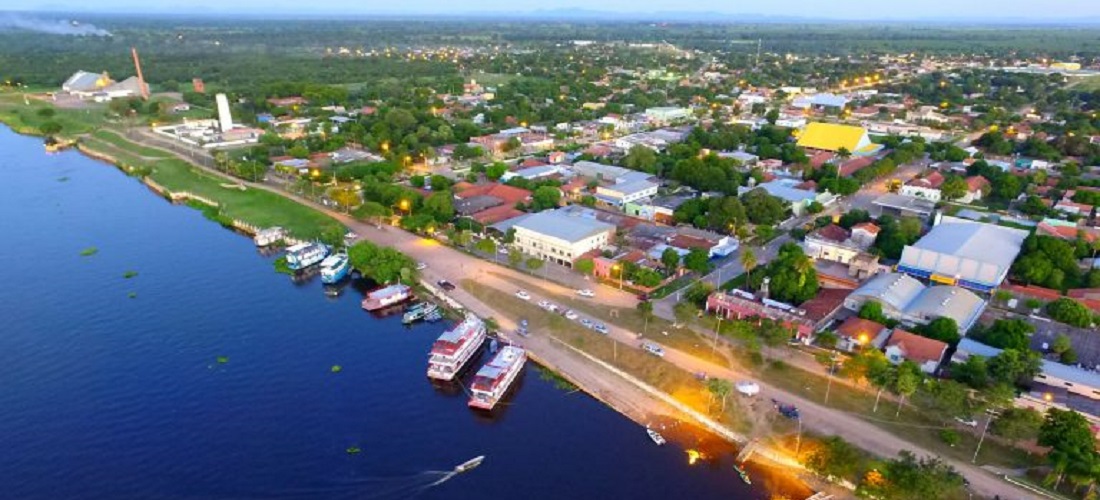
Soybean shipments at Porto Murtinho terminal skyrocket
Aug, 22, 2023 Posted by Gabriel MalheirosWeek 202325
Amid the ongoing controversy surrounding Argentina’s decision to charge toll fees on vessels transporting ores and grains down the Paraguay River, data from Brazil’s National Waterway Transport Agency (ANTAQ) paints a optmistic picture: soybean shipments at the Porto Murtinho terminal have surged in the first half of this year, soaring by an impressive 332.6% compared to the same period last year. This surge in volume surpassed the combined total of shipments over the past four years.
From January to June 2023, a whopping 957,891 tonnes of soybeans were shipped through the Murtinho port, compared to 221,452 tonnes seen over the same months in the previous year. This translates to around 20,000 bi-train trucks that would have otherwise travled southwards to the Paranaguá or other Brazilian ports.
On the flip side, this equates to over a hundred trailers arriving in Porto Murtinho each day. Assuming that all soybeans were transported using two-train units with a 50-ton capacity, an average of 106 trucks made their way into the city daily, even including weekends and holidays throughout the first semester.
However, given that most trucks carry a smaller load of around 35 tons, the actual number of drivers surpasses this daily average. Moreover, the surge in shipments began only in mid-February, skyrocketing from April onwards. When considering shipments exclusively in the second quarter, the city experienced an average of 250 trailers per day.
Typically, these trucks wait for hours or even days to unload the cargo they are carrying, consequently driving economic activity in the southwestern region of Mato Grosso do Sul, approximately 440 kilometers from Campo Grande.
To grasp the full scale of the growth in 2023, one can compare it to the movement of the previous four years, as documented on the ANTAQ website. Between 2019 and 2022, 863 thousand tonnes of soy were shipped. In essence, the volume for the first half of this year exceeded the total shipments of the entire four previous years by a remarkable 11%.
Of the total 15 million tonnes of soy harvested in the state this year, nearly 7% has already left Porto Murtinho. A recent forecast by Secretary Jaime Verruck suggests that this figure could potentially reach two million tons this year, thereby elevating the percentage to nearly 15% of the total crop utilizing this new logistics corridor.
EXPLANATION FACTORS
One significant factor behind this “explosion” in shipments is the flood of the Paraguay River, which has exceeded two meters since January’s end and reached almost six meters in Porto Murtinho by mid-March, according to data updated daily by the Brazilian Navy.
As of Saturday (19), the river’s level was at 4.62 meters. On the same day the previous year, it stood at 2.84 meters, and two years prior, it measured just 1.67 meters. In that year, it plunged to a mere 77 centimeters, rendering water transport unfeasible.
Furthermore, as the river level has also reached its highest point in the last five years in Ladário, at 4.24 meters, there’s a clear indication that much more water has yet to flow through the Pantanal landscape. Navigability is expected to remain consistent until at least the end of October, extending from Corumbá to the Buenos Aires region in Argentina.
Another explanation for the Porto Murtinho terminal’s sudden success lies in Argentina. The drought in the neighboring country has significantly reduced crop productivity, compelling Argentine industries to import soybeans from Brazil.
This impressive movement caught many by surprise, including the terminal operators, the FV Cereais Group. By mid-March, 650 thousand tonnes had been handled, a historic volume for the terminal. The company’s optimistic projection was to reach up to one million tonnes, a target that was achieved in July.
To accommodate this heightened demand, shipments have been ocurring 24/7, and unloading spaces for grains were expanded due to a lack of silos for storage.
ORES
The surge hasn’t been exclusive to soybean transportation alone. In the first half of this year, approximately 3.4 million tonnes of ore traveled down the Paraguay River, marking a 60% increase compared to the same period last year and setting a new record according to ANTAQ.
Barring any significant water shortages, this trend is expected to persist in the coming years. Secretary Jaime Verruck’s forecast suggests that miners currently extract around 7 million tonnes per year, with estimates projecting this figure to double to 14 million in the near future.
Source: Compre Rural
To read the original text, visit: https://www.comprerural.com/embarques-do-soja-no-terminal-de-porto-murtinho-explodem/
-
Trade Regulations
Jan, 22, 2021
0
Exports to USA suffer largest drop among Brazil’s major trading partners
-
Ports and Terminals
Jun, 13, 2022
0
Wilson Sons starts operations with tugboat capable of reducing greenhouse emissions
-
Vessel Calls
Aug, 11, 2022
0
Container vessel calls at Brazilian ports fall 4.11% in July year-on-year
-
Tradelane Graphs
Mar, 07, 2019
0
DataLiner Brazil Tradelane Graphs | Jan 2012 to Jan 2019 (TEU)


